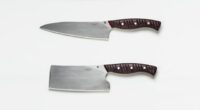Stainless steel is an alloy of iron and chromium, which gives it its corrosion-resistant properties. Steel, on the other hand, is an alloy of iron and carbon. Carbon makes up a much smaller percentage of steel than chromium does of stainless steel, which is why steel isn’t as resistant to corrosion.
What is stainless steel?
Stainless steel is an alloy of iron and chromium and is used in a variety of applications where corrosion resistance and durability are required.
What is steel?
Steel is an alloy of iron and carbon, and is much harder and stronger than iron. Steel is used in a variety of industries and applications, including construction, automotive manufacturing, shipbuilding, and more.
Stainless steel Vs. Steel – Key differences
The main difference between stainless steel and regular steel is that stainless steel does not rust or corrode as easily as regular steel. Stainless steel is made of a chromium-nickel alloy, and regular steel is made of iron with carbon added.
Chromium in the alloy reacts with oxygen to form a thin film of chromium oxide on the surface of the metal. This film is extremely dense and prevents further oxygen atoms from diffusing into the metal and causing corrosion. Nickel also has corrosion-resistant properties, which adds to the overall resistance of stainless steel.
The addition of carbon to regular steel makes it harder than stainless steel, but it also makes it more susceptible to corrosion. The carbon forms a layer of oxide on the surface of the metal that protects it from further corrosion, but this layer is not as dense or effective as the chromium oxide layer on stainless steel.
While both types of steel are strong and durable, stainless steel has the added benefit of being easy to clean and maintain. Stainless steel can be used in a wide variety of applications, from cookware to surgical instruments, and is an excellent choice for those who are looking for a low-maintenance option.
Stainless steel is more expensive than regular steel because of the addition of chromium and nickel. However, it is worth the extra cost for applications where corrosion resistance is important.
Applications of stainless steel and steel
Stainless steel is often used in food preparation and medical equipment due to its corrosion resistance, while steel is more commonly used in construction and engineering.
Does stainless steel turn or rust?
Although stainless steel is more resistant to corrosion than regular carbon steel, it’s not completely immune to rusting. Stainless steel contains iron, which can oxidize (or rust) when exposed to water and oxygen. The chromium in stainless steel forms a passive film on the surface of the metal, which helps protect it from corrosion. However, this passive film can break down if the stainless steel is exposed to strong oxidizing agents, high temperatures, or mechanical stress. This can cause the metal to corrode and discolour.
What are the disadvantages of stainless steel?
There are a few disadvantages of stainless steel to be aware of. First, it is more expensive than regular carbon steel. Second, it is not as strong as some other metals, so it may not be the best choice for certain applications. Finally, it can be difficult to weld and is not as corrosion-resistant as some other materials.
Does stainless steel damage a fridge?
Stainless steel is a durable and low-maintenance material, but it is not immune to damage. If your fridge is made of stainless steel, there are a few things you should be aware of to keep it looking its best.
First, stainless steel can be prone to scratches. If you notice any scratches on your fridge, you can try to remove them with a soft cloth and a mild cleaner. However, deep or severe scratches may require professional help.
Second, stainless steel can also show fingerprints and smudges more easily than other materials. To avoid this, make sure to clean your fridge regularly with a gentle cleaner and microfiber cloth.
Finally, keep in mind that stainless steel is not completely stain-proof. If you spill something on your fridge, wipe it up immediately to prevent staining. If a stain does occur, you may be able to remove it with a speciality cleaner meant for stainless steel surfaces.
Is it safe to freeze food in stainless steel?
When it comes to freezing food, stainless steel is a safe option. Unlike other materials, stainless steel will not leach chemicals into your food. Additionally, stainless steel is non-porous, so it will not absorb any flavours or smells from your food.
What are the 5 uses of steel?
1. Steel is often used in construction projects because it is strong and durable.
2. Steel can also be used to make pipes and other types of tubing.
3. Some types of steel are often used in the automotive industry because they are resistant to wear and tear.
4. Steel can also be used to create storage containers like tanks and barrels.
5. Finally, steel is sometimes used in the creation of art or other decorative objects.
Photo by Justus Menke on Unsplash








